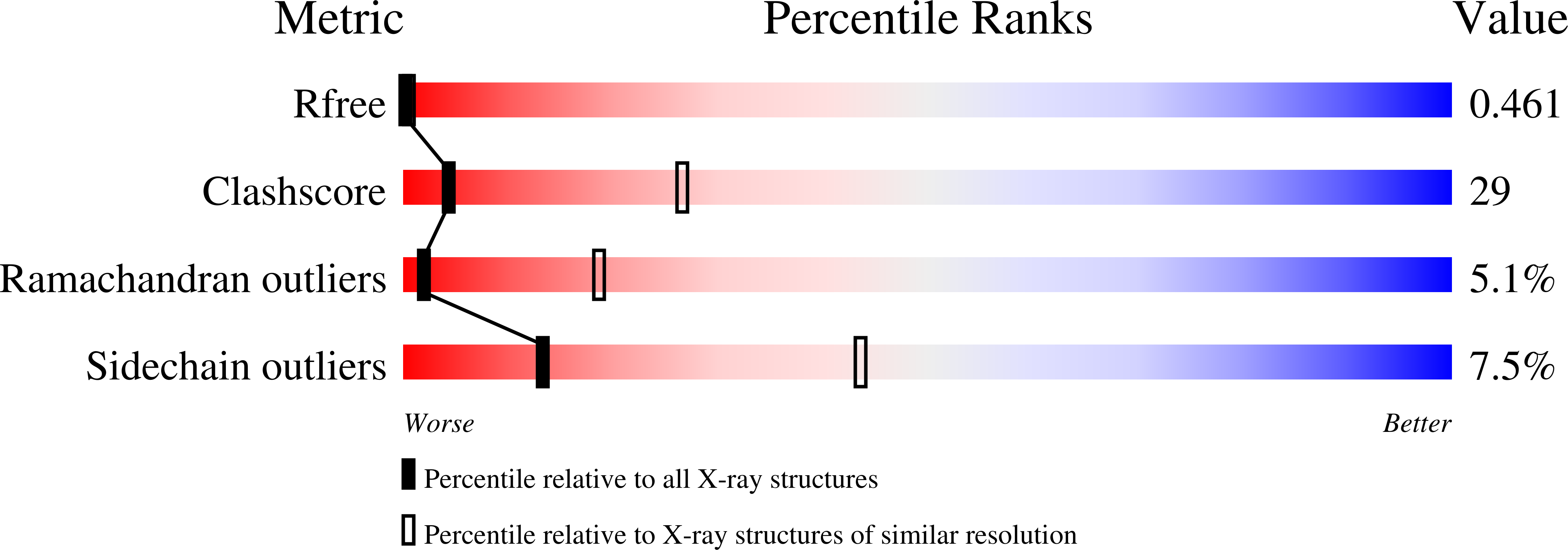Structure Determination of Phage Pp7 from Pseudomonas Aeruginosa: From Poor Data to a Good Map
Tars, K., Fridborg, K., Bundule, M., Liljas, L.(2000) Acta Crystallogr D Biol Crystallogr 56: 398
- PubMed: 10739912
- DOI: https://doi.org/10.1107/s0907444900001232
- Primary Citation of Related Structures:
1DWN - PubMed Abstract:
The structure of bacteriophage PP7 from Pseudomomas aeruginosa was determined to 3.7 A resolution. Triclinic crystals of three forms were obtained, diffracting to between 4.5 and 3.4 A resolution. The quality of the crystals was exceptionally poor, leading to problems in the evaluation of the recorded images and to a final data set which would appear to be useless with standard criteria for protein crystals. In all crystal forms, the unit cell contains two icosahedral particles, providing 120-fold non-crystallographic symmetry. For two of the crystal forms, the particle orientations were calculated using the self-rotation function. The two particles in the asymmetric unit had very similar but distinct orientations. The position of the second particle was found using the Patterson function. Initial phases to 15 A resolution were calculated using the related phage MS2 as a model. Real-space averaging was performed and phases were extended from 15 A resolution to the limit of the data. The map was improved significantly by using only the 'high' resolution data in the resolution range 7-3.7 A, allowing the positions of most side chains to be determined. The better quality of the 7-3.7 A resolution map is presumably a consequence of the presence of satellite crystals. The position of the second particle was improved using the correlation coefficient in the averaging process to monitor the refinement by moving the particle around in small steps.
Organizational Affiliation:
Department of Cell and Molecular Biology, Uppsala University, Box 596, S751 24 Uppsala, Sweden. lars@alpha2.bmc.uu.se














